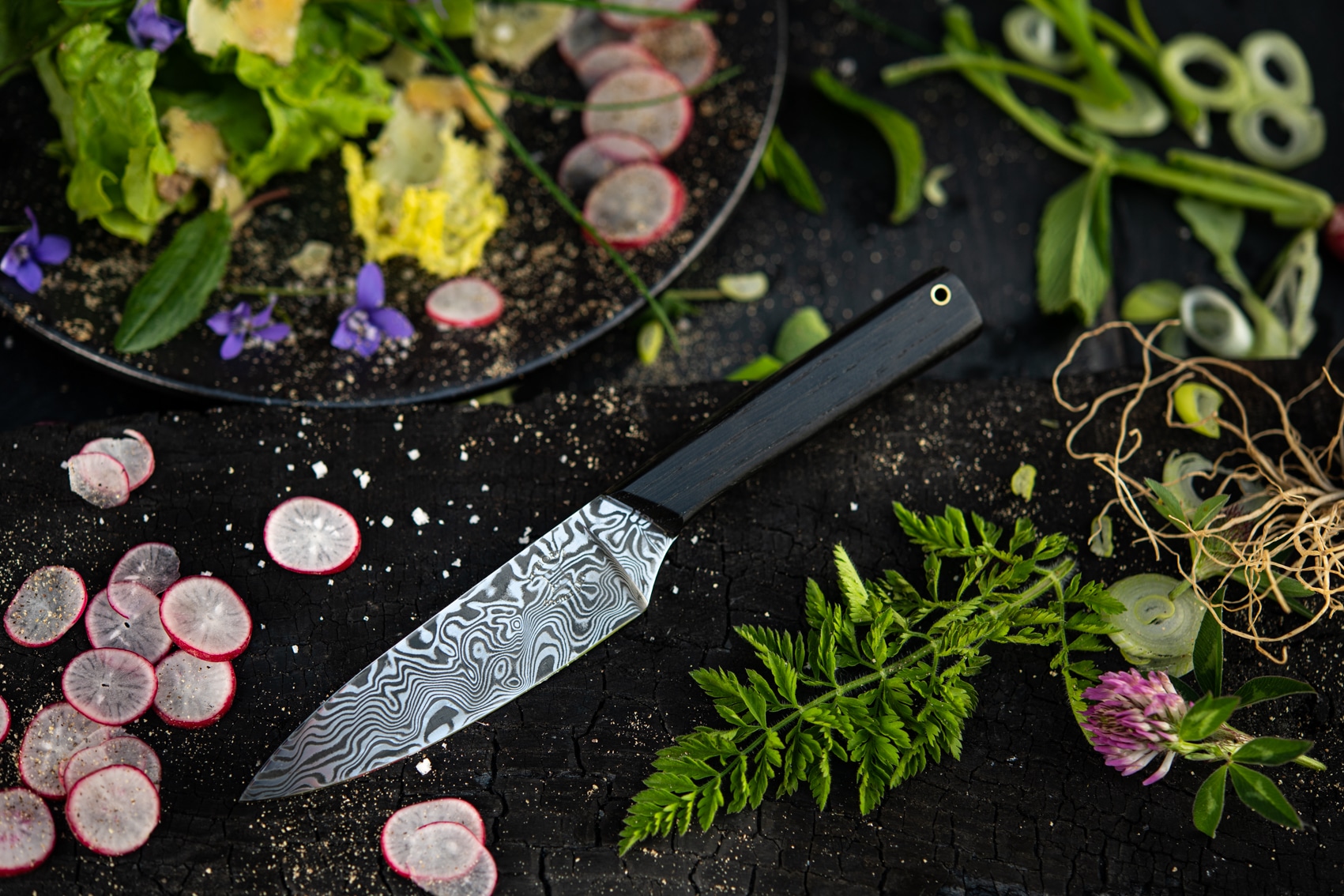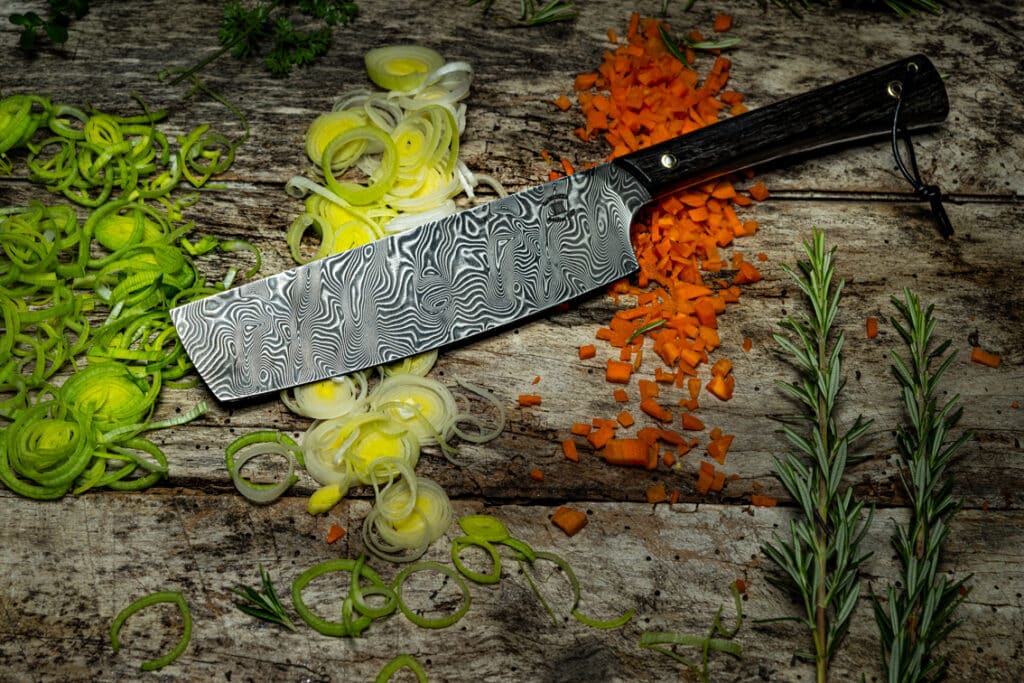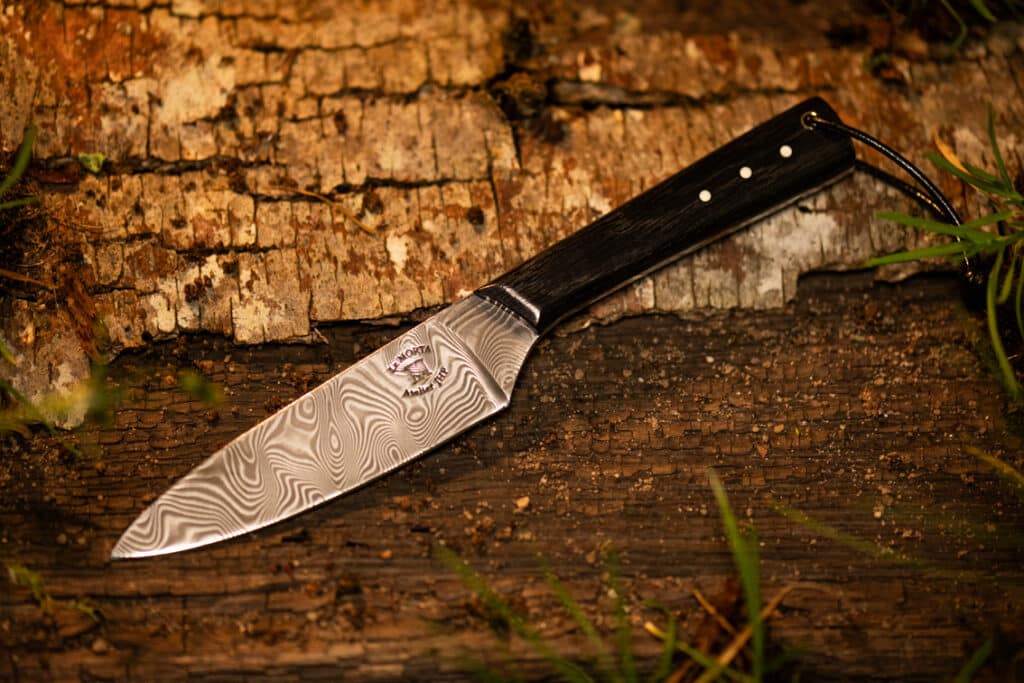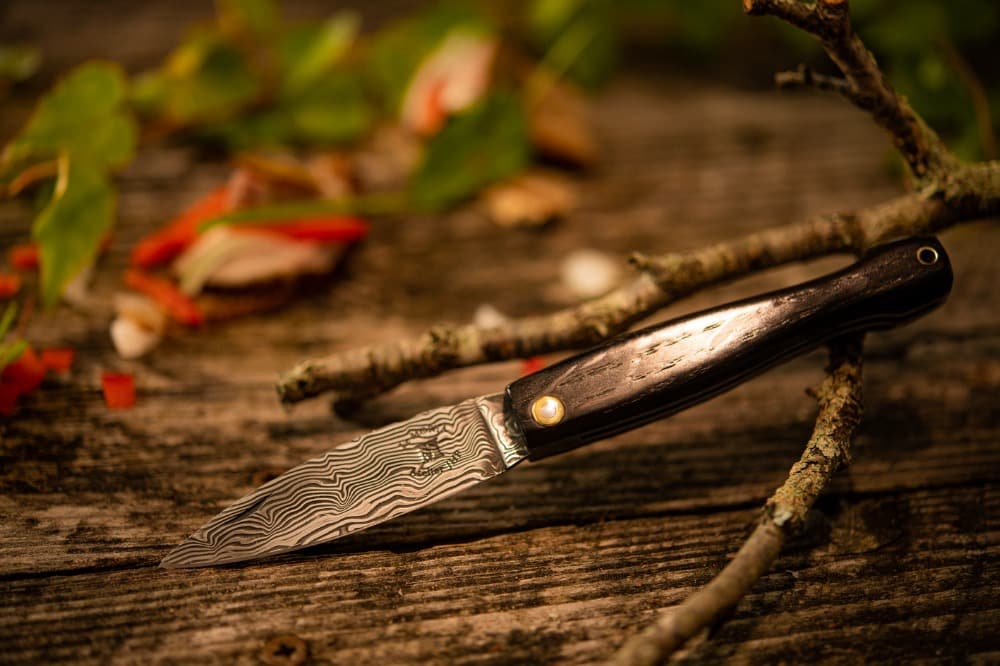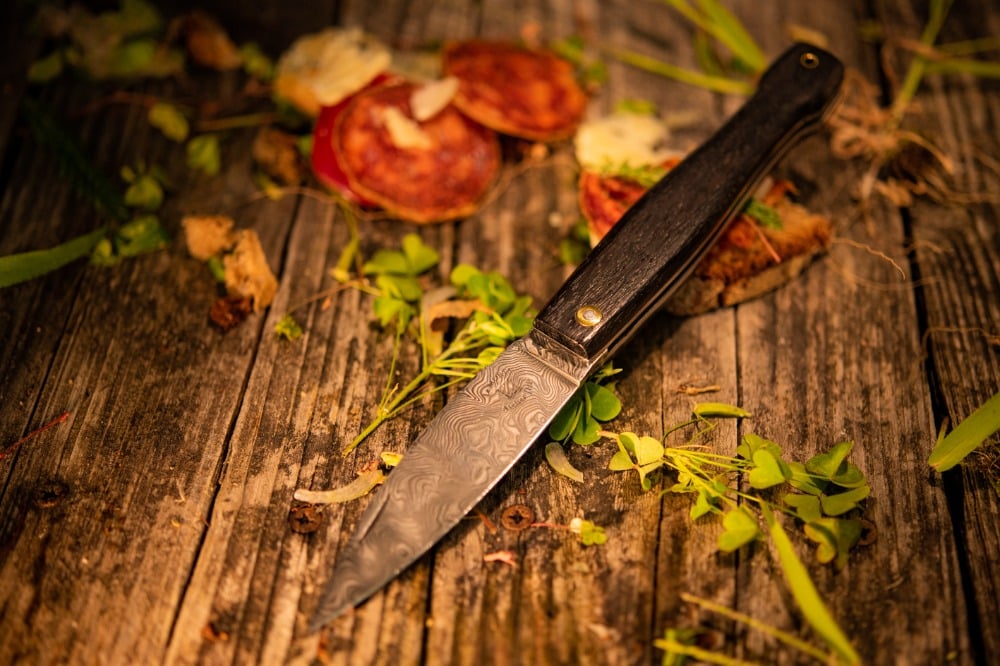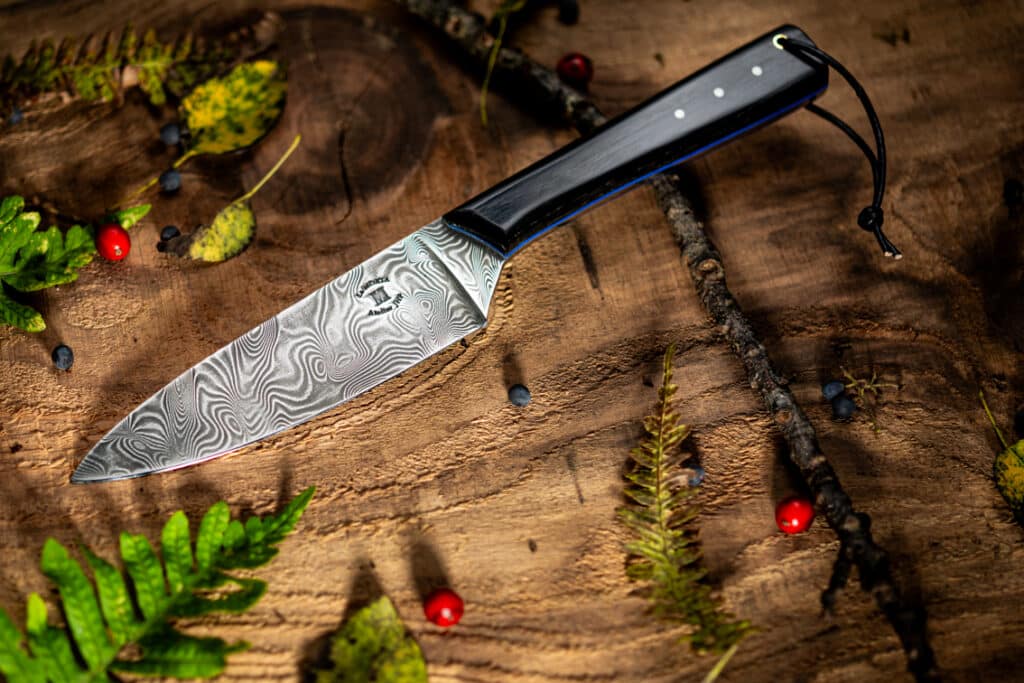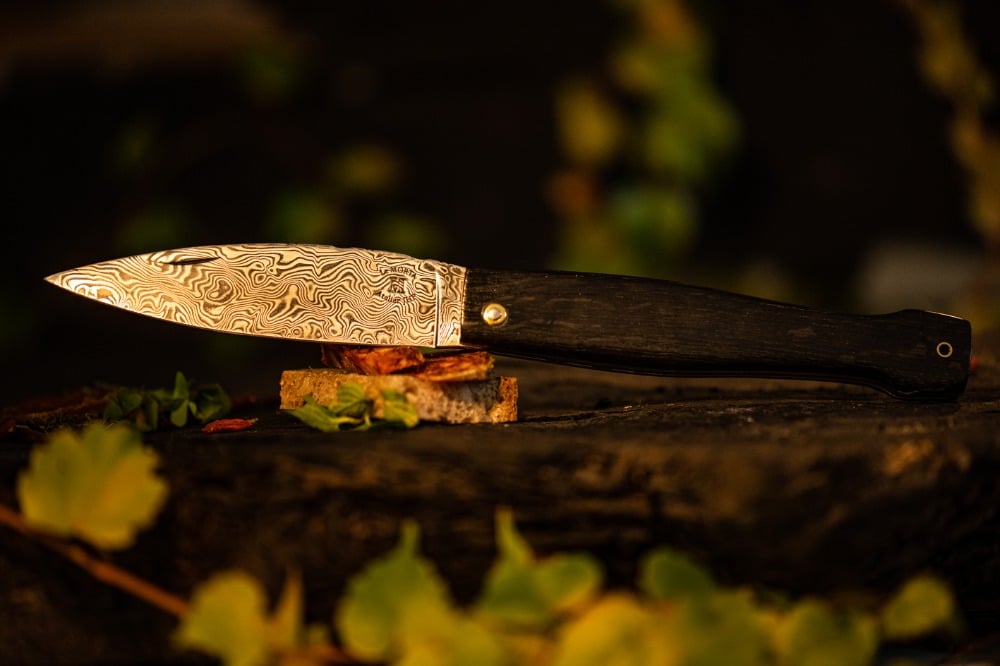Are you intrigued by the stunning patterns of Damascus knives and wondering how they’re crafted? Originally from ancient civilizations, these knives have a reputation for their unique surface textures and unparalleled durability.
This article will take you through the rich history, crafting process, advantages, and maintenance tips for this illustrious tool.
So let’s dive in to reveal the mystique behind Damascus steel!
What is a damascus knife?
A Damascus knife is a type of knife made from Damascus steel, known for its exceptional strength, durability, and unique patterns.
A Damascus knife thrives on a legacy of top-tier craftsmanship, originating from the ancient city of Damascus. These knives stand as an emblem of superior strength and unique beauty due to their special construction.
They are crafted from layered steel, usually high-carbon steel or iron, hardened through a specialized metallurgical process called swordsmithing. This creates a recognizable wavy or watered pattern on the blade’s surface that truly sets them apart.
Further fortifying their repute is their exceptional flexibility and keen-edge retention capacity, rendering them perfect for culinary experts or outdoor enthusiasts in need of durable pocket knives.
Origins and history of damascus steel
Damascus steel is a type of steel that has a legendary reputation for its strength and beauty. Its origins can be traced back to ancient times, with its production techniques dating back as far as the 4th century BC in India.
It was primarily used in the Middle East and Asia, where it gained prominence for its superior quality and performance.
What made Damascus steel so special was its unique manufacturing process. The exact details of this process have been lost to history, but what we do know is that it involved forging together multiple layers of different types of steel.
This created a blade with exceptional hardness, flexibility, and sharpness.
The art of making Damascus steel eventually spread to other parts of the world, particularly during the Crusades when European knights encountered these remarkable blades on their travels.
How are damascus knives made?
Damascus knives from the Couteau Morta workshop are crafted through a meticulous process that combines modern techniques with the traditional art of knife-making. This fusion gives rise to knives with distinctive patterns and exceptional strength.
The process of creating damascus steel
Damascus steel, renowned for its strength and distinctive patterns, is created through a meticulous process that has been refined over the years by the Couteau Morta workshop. Instead of using a variety of high-carbon steel types, our workshop utilizes blades made from RWL34 – PMC37, known for their hardness of 59 HRC, thus ensuring exceptional durability.
This modern process involves several steps, including sintering, which allows for an extremely fine and regular grain, imparting unique properties to the steel. This modern technique creates steel with excellent edge retention, ease of sharpening, better corrosion resistance, and high toughness.
Techniques used in knife production
To create Damascus steel, the Couteau Morta workshop employs a variety of modern techniques in knife production. One of these techniques is blade forging, where high-quality materials are heated and hammered together to form a single piece of metal, thereby revealing the characteristic layered pattern seen on Damascus knives.
Another technique used is modern knifemaking, which involves shaping the blade using modern methods while respecting the ancestral traditions of knife-making. This step includes grinding, filing, and polishing the blade to reveal its unique beauty.
The surface pattern on the knife is achieved through various methods, such as etching or acid treatment, which not only enhance the aesthetics but also contribute to the durability and flexibility of Damascus knives.
What are the advantages and features of damascus knives?
Damascus knives offer exceptional strength and durability, making them highly sought after by both professional chefs and knife enthusiasts. The unique patterns and aesthetics of Damascus steel add a touch of elegance to any kitchen or collection.
And when it comes to performance, their sharpness and cutting ability are unmatched, allowing for effortless slicing through various food items.
Strength and durability
These knives are made using a unique layering technique that combines high-carbon steel and other alloys, resulting in a blade that is incredibly strong and resistant to wear and tear.
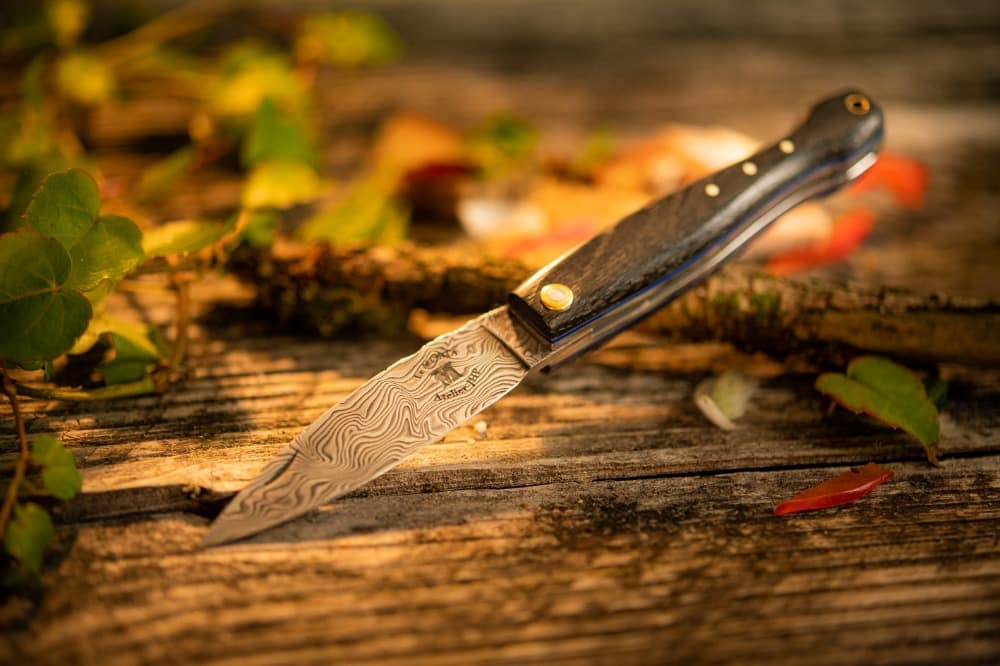
The layered construction also provides flexibility, allowing for precise control while cutting or slicing. Whether you’re using it in the kitchen or outdoors, a Damascus knife is designed to withstand heavy use without compromising its sharpness or structural integrity.
Its exceptional strength ensures that it will retain its edge for longer periods of time compared to regular knives, making it an excellent investment for any cooking enthusiast or professional chef.
Unique patterns and aesthetics
As we explained earlier, these patterns, often referred to as the “watered pattern” or “wavy pattern,” are a result of the intricate forging techniques used in creating Damascus steel.
The surface texture of a Damascus blade is visually captivating and can vary from knife to knife, making each one truly unique. The layered steel construction adds depth and complexity to the design, enhancing its overall appeal.
Sharpness and cutting performance
The high-carbon steel used in these knives allows for a razor-sharp edge that can effortlessly glide through various materials.
Whether you’re slicing vegetables or carving meat, a Damascus knife provides precision and efficiency. The layered steel construction also contributes to this sharpness, as it creates micro-serrations along the blade’s edge, enhancing its cutting ability.
How to care for damascus knives ?
To ensure the longevity of your Damascus knife, it is crucial to clean and maintain it properly, prevent rust and corrosion, and use the correct sharpening and honing techniques.
Proper cleaning and maintenance
After each use, gently wash the blade with warm water and mild soap, using a soft cloth or sponge to remove any dirt or food residue.
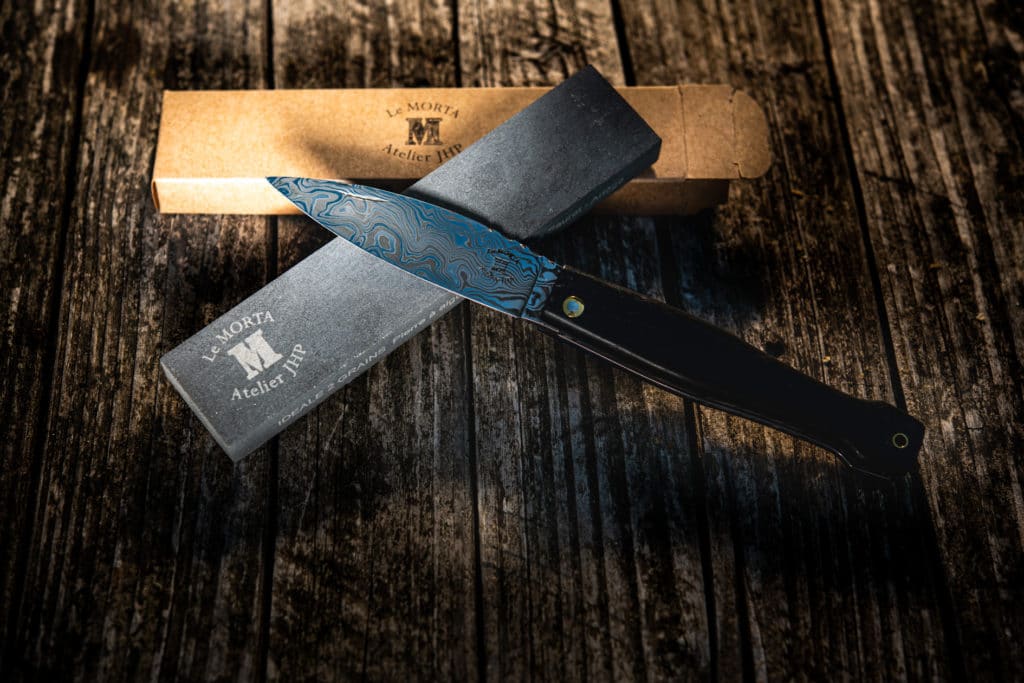
Avoid using abrasive cleaners or scrubbing too vigorously, as this can damage the delicate surface texture of the knife.
Once clean, thoroughly dry the blade before storing it to prevent moisture buildup and potential rusting. Apply a thin layer of mineral oil or a specialized knife oil to protect against corrosion during storage.
Sharpening and honing techniques
To maintain the sharpness of a Damascus knife, proper sharpening and honing techniques must be employed. Sharpening involves removing material from the blade’s edge to create a new, sharp edge.
This can be done using various methods such as sharpening stones or diamond rods. Honing, on the other hand, is the process of realigning the microscopic teeth on the blade to optimize its cutting performance.
It helps in maintaining sharpness between sharpenings. A leather strop or honing rod can be used for this purpose.
Conclusion
In conclusion, a Damascus knife is a high-quality blade crafted using ancient techniques to create a unique and visually stunning pattern. These knives are known for their exceptional strength, sharpness, and durability.
Proper care and maintenance will ensure that your Damascus knife stays in prime condition for years to come.

